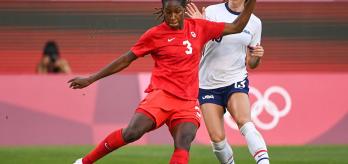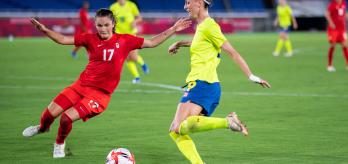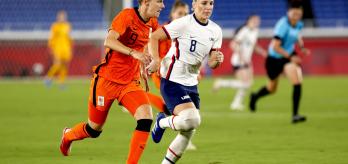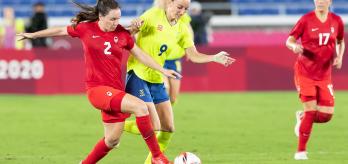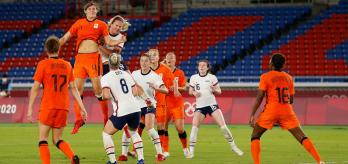A unique defensive line of three
With regard to the defensive lines, virtually all of the teams fielded four-strong defences, with Australia the only side to employ a different system. The Matildas instead adopted a unique three-at-the-back structure when attacking and switched to a defensive unit comprising five players when defending. These systems are closely linked to the Australians’ equally unique build-up tactic. One trend identified across the board is that teams continue to position their full-backs high up the pitch.
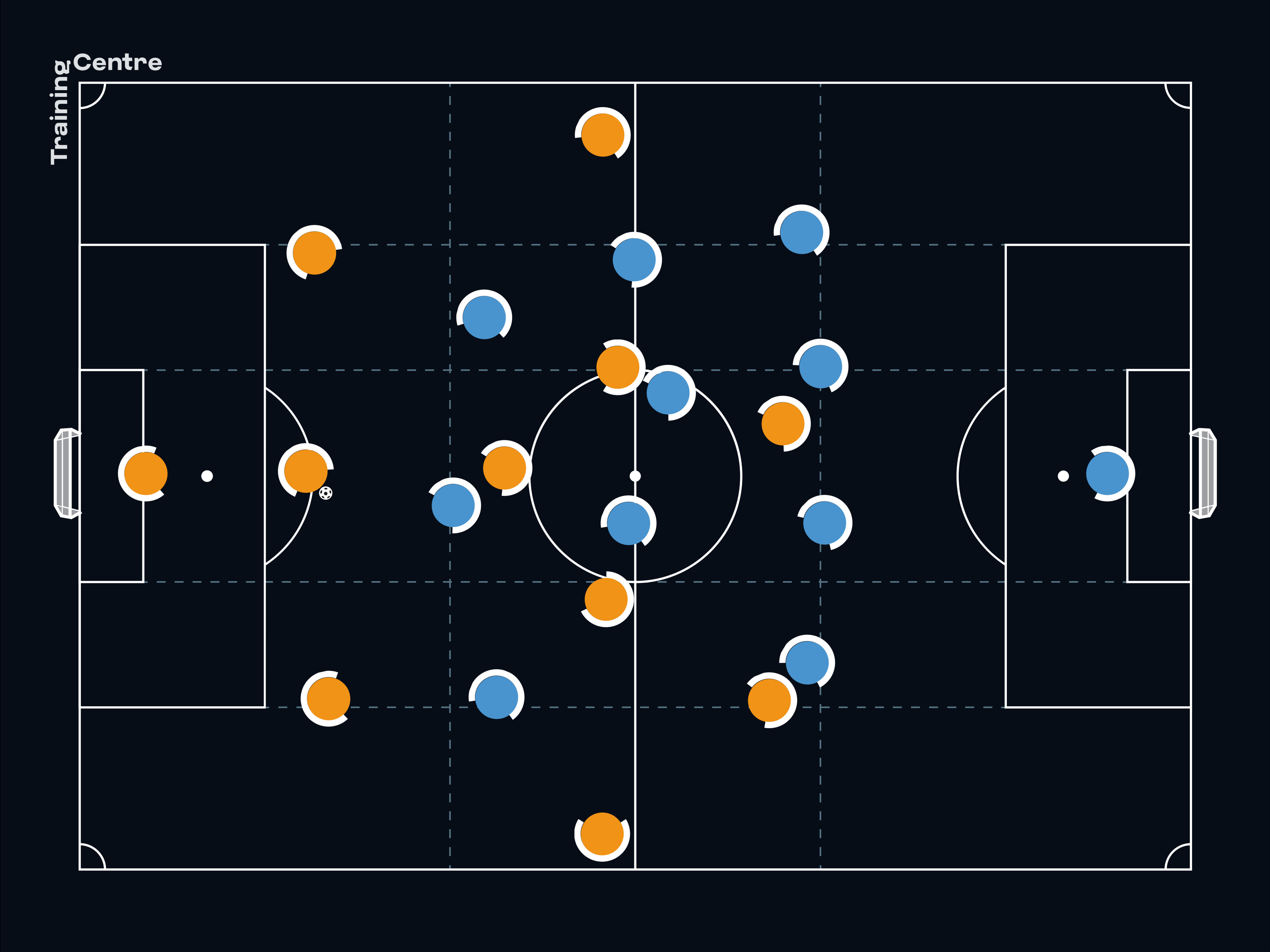
What is important is to note that teams today obviously change their system depending on whether they have the ball or not and that the tactical culture of the players allows for more flexibility in the way they play.
Role of the full-backs
The full-backs’ tendency to do this was significant for the balance of the overall system that teams were adopting. Although a majority of teams adopted a formation that included a defensive line of four players, this does not mean that there was a uniformity in the way their systems functioned; teams could vary their systems by altering the position of their two wide defenders. For example, teams adopting a 4-4-2 could adapt to the situation of the game by transitioning into a more offensive 2-4-4. Here, the full-backs would facilitate the change by pushing higher up the pitch. In other scenarios, they could also choose to push one full-back forward, creating another different shape. By varying how full-backs were positioned, teams could alter the balance of their team to suit the demands of their current match situation.
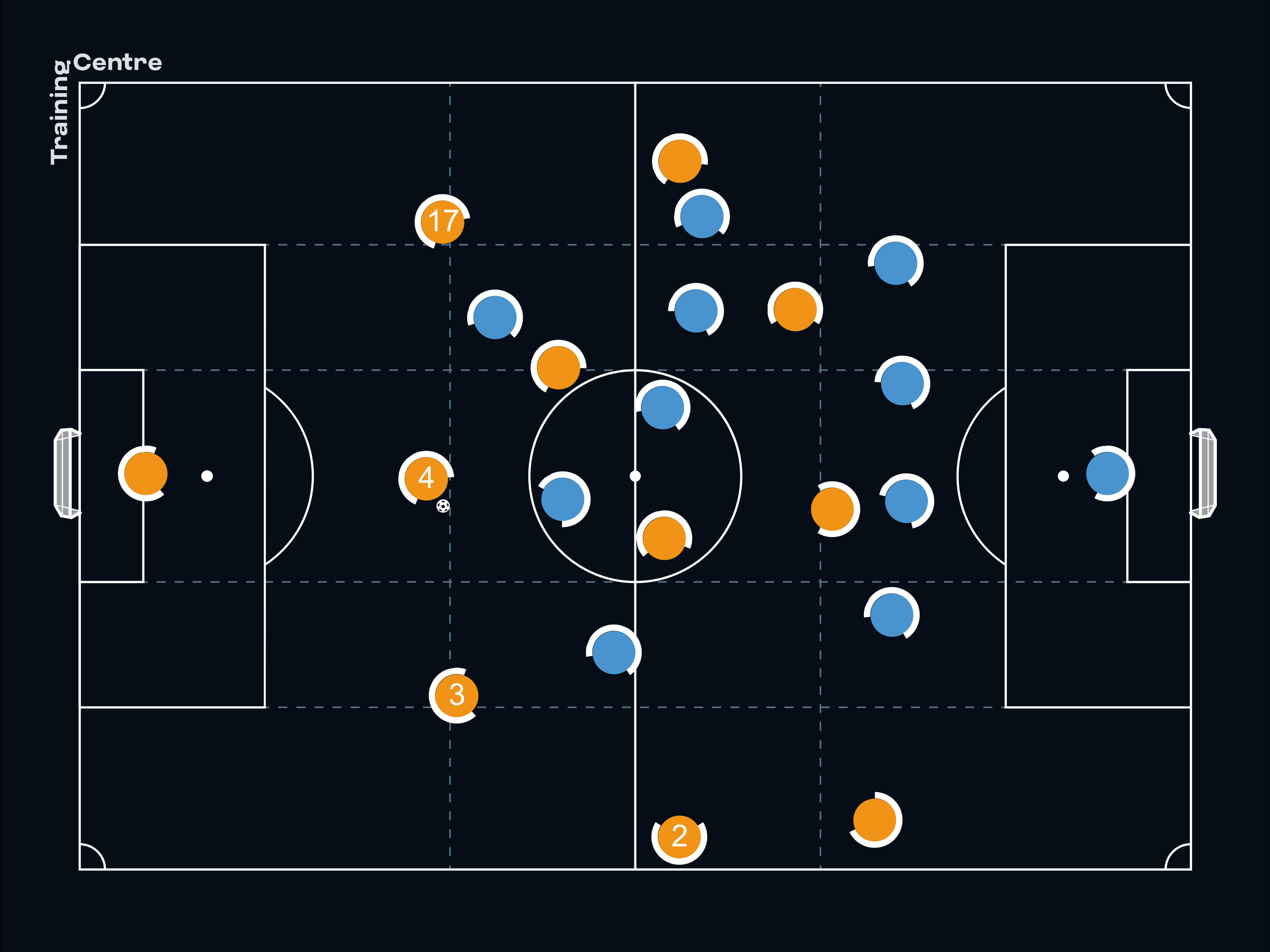
Playing to the strengths of the Number 9
In the attacking third, the tournament was a showcase of number-9 talent and the teams’ formations reflected this. In an effort to play to these world-class strikers’ strengths, their coaches opted to deploy them in solitary attacking roles, with Great Britain’s Ellen White, Australia’s Sam Kerr and the Netherlands’ Vivianne Miedema all ploughing a lone furrow. Although on paper Stina Blackstenius was accompanied by a strike partner, Sweden’s talisman often operated in a more advanced role.
Two multidimensional strikers
The teams that opted to go with two up top, as opposed to a lone frontrunner, demonstrated another trend that was witnessed in Japan. Rather than playing one of the two forwards in a more advanced position, as is traditionally the case, these sides deployed their strikers alongside each other. When one forward plays high and the other plays low, the two adopt different attacking roles that require different skill sets. The striker operating in the more advanced role looks to make runs in behind, whereas her deep-lying partner seeks to link up play in midfield areas. When two forwards largely operate at the same latitude it means that they should both be capable of performing these roles. This would suggest that these players are becoming increasingly multidimensional and possess the versatility required to stretch the defensive line and drop into midfield to help the team retain possession.





